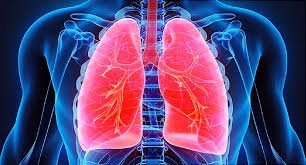FDA approves new device to help in lung transplant
April 29, 2019 | Monday | News
The FDA granted the premarket approval to Xvivo Perfusion Inc. Premarket approval is the most stringent type of device marketing application required by FDA and is based on a determination by the FDA that the PMA application contains sufficient valid scientific evidence to provide reasonable assurance that the device is safe and effective for its intended use(s)
The U.S. Food and Drug Administration has approved a device, called Xvivo Perfusion System with Steen Solution Perfusate, that can temporarily ventilate, oxygenate, and pump (perfuse) preservation solution through lungs that were initially thought to be unacceptable for transplant.
The device allows the transplant team to perform a more careful assessment of lung function to get a better sense of how the organs are working when they are perfused with a solution outside the body to better determine whether the lungs can then be viable for transplant.
The Xvivo Perfusion System was originally granted marketing authorization in 2014 under a humanitarian device exemption (HDE), a regulatory pathway that limits the device's use to a maximum of 8,000 patients per year. The approval through the FDA's more stringent premarket approval (PMA) pathway does not limit yearly patient use of the device, thereby allowing an increased number of lungs to be available for transplant and potentially increasing the number of patients who can benefit from this technology.
"Sadly, too many patients on transplant lists die waiting for suitable lungs. Providing patients with access to safe medical devices that have the potential to be lifesaving remains a top FDA priority, and we support the development of innovative technologies that can increase the donor organ pool for transplant patients in need of suitable lungs," said Benjamin Fisher, Ph.D., director of the Division of Reproductive, Gastro-renal, Urological Devices at the FDA's Center for Devices and Radiological Health.
The Xvivo Perfusion System works by allowing marginal quality lungs that initially failed to meet standard transplant criteria to be ventilated, oxygenated and perfused at a standard normal body temperature for up to five hours. This provides an opportunity for surgeons to reassess transplant suitability, allowing them to transplant a certain percentage of lungs that were initially deemed to be unsuitable. The device consists of a perfusion cart with mechanical and electrical components that ventilate, oxygenate and perfuse the lungs with a lung preservation solution.










